Legrand RH250W Handleiding
Legrand
Niet gecategoriseerd
RH250W
Bekijk gratis de handleiding van Legrand RH250W (12 pagina’s), behorend tot de categorie Niet gecategoriseerd. Deze gids werd als nuttig beoordeeld door 54 mensen en kreeg gemiddeld 4.9 sterren uit 27.5 reviews. Heb je een vraag over Legrand RH250W of wil je andere gebruikers van dit product iets vragen? Stel een vraag
Pagina 1/12

Wattstopper
®
Multi-Way Wall Switch Convertible Occupancy Sensor
Détecteur de présence multivoies à interrupteur mural convertible
Sensor de Desocupación de pared configurable
Installation Instructions • Instructions d’Installation • Instrucciones de Instalación
No: 24261 – 09/16 rev. 1
Catalog Number • Numéro de Catalogue • Número de Catálogo: RH-250
Country of Origin: Made in China • Pays d’origine: Fabriqué en Chine • País de origen: Hecho en China
SPECIFICATIONS
Voltage .........................................................................120VAC, 60Hz
Load (Multi-Way)
Incandescent or fluorescent 0-600 Watts .......................................
Fan motor 1/6 hp ............................................................................
Time Delay Adjustment .................... 15 sec., 5 min., 15 min., 30 min.
Light Level Adjustment ..................................................10 fc to 150 fc
Environment ................................................................Indoor use only
Operating Temperature.......................... 32° to 131°F (0° to 55°C)
Humidity................................................ 95% RH, non-condensing
Tools Needed
Insulated Screwdriver
Wire Strippers
DESCRIPTION AND OPERATION
RH-250 Multi-way Wall Switch Convertible Occupancy Sensors are designed to replace standard single pole and multi-way (3-way, 4-way)
switches. They are ideal for any room with multiple entries and any other indoor space where vacancy sensor-based controls with manual ON/
OFF capability are desirable.
Like standard switches, you can press the ON/OFF button to turn the light or fan (controlled load) ON and OFF. Unlike standard switches, the
RH-250 automatically turns OFF the controlled load after the coverage area has been vacant for a period of time (Time Delay). If motion is
detected within 30 seconds after it automatically turns OFF, the RH-250 automatically turns the load back ON.
While the sensor is factory preset as a Vacancy Sensor with manual ON operation, it can be adjusted to work as an occupancy sensor that turns
the controlled load ON automatically upon detection of occupancy in the area.
The RH-250 can be wired with up to three additional RH-250s for multi-way Manual/Auto–ON/OFF of one or several loads (up to one load
connected to each RH-250). It can also be wired to up to four RH-253 single pole momentary wall switches for multi-way Manual-ON/OFF
Automatic-OFF control of one load.
Lighted Switch
To help you locate the RH-250 in a dark room, the amber LED illuminates the ON/OFF button while the controlled load is OFF. When the
controlled load is ON, the LED is OFF.
Operating Modes
For multi-way operation of two or more RH-250s, we recommend that the Operating Mode be the same in all sensors related to the same load.
This makes it easier to understand the multi-way control operation as well as trouble shooting. There are two operating modes to select from:
MODE 1 Vacancy sensor (Manual-ON/OFF, Auto-OFF): The user must press the ON/OFF button to turn the load ON. The RH-250 keeps the
load ON until no motion is detected by any of the related RH-250s for the time delay period. There is also a 30 second reset delay after the
automatic shut-off. If motion is detected during this time, the sensor turns the load back ON automatically. After the 30 second reset delay has
elapsed, the ON/OFF button must be pressed to turn ON the load.
MODE 2 Occupancy sensor (Auto-ON/OFF with manual control and reset to auto after 5 minutes of vacancy): The load turns ON and OFF
automatically based on occupancy detection. Once turned ON the RH-250 keeps the load ON until no motion is detected by any of the related
RH-250s for the time delay period. If the load is turned OFF manually, automatic-ON is re-enabled when no motion is detected for 5 minutes.
This prevents the load from being turned ON after it was deliberately turned OFF.
Time Delay
The time delay can be selected by the user during set up. It can be adjusted to any of these fixed values:15 seconds/5 minutes/15 minutes/30
minutes. We recommend that the time delay be the same in all sensors related to the same load. This makes it easier to understand the multi-
way control operation as well as trouble shooting. For additional information on how to adjust it, please read the SENSOR ADJUSTMENT &
PROGRAMMING section of this installation manual.
Light Level
When the operating mode is set for occupancy sensor, Mode 2 (Auto-ON) this feature prevents the sensor from automatically turning the lights
ON if there is already enough light in the area.
In a multi-way application, each sensor monitors the light level at it’s location. If any sensor related to the load detects motion AND the measured
light level in that sensor’s area is lower than it’s Light Level setting, the load turns ON.
To adjust the light level, please read the SENSOR ADJUSTMENT & PROGRAMMING section of this installation manual.

2
Coverage Area
The RH-250 has a maximum coverage range of 180 degrees and a coverage area of 600 square feet (56
square meters). The sensor must have a clear and unobstructed view of the coverage area. Objects blocking
the sensor’s lens may prevent detection thereby causing the light to turn OFF even though someone is in the
area.
NOTE: Windows, glass doors, and other transparent barriers will obstruct the sensor’s view and prevent
detection.
INSTALLATION & WIRING
These instructions describe only the 3-way circuit applications.
For information about other applications,
consult technical support.
1. Prepare the switch box
After the power is turned OFF at the circuit breaker box,
remove the existing wall plate and mounting screws. Pull
the old switch out from the wall box.
2. Identify the type of circuit
You may connect the RH-250 to a single pole or multi-way
circuit. If you are unable to clearly identify some or all of the
wires mentioned in this manual, you should consult with a
qualified electrician.
In a 3-way circuit (see Fig. 2), two traveler wires connect
to both switches. Another wire provides power from the
circuit box to one of the switches. A wire connects from one
switch to the load. A ground wire may also be connected to
a ground terminal on the old switches. A neutral wire should
also be present in both wall boxes.
CAUTION
For your safety: Connecting a proper ground to the sensor provides protection against electrical shock in the event of certain
fault conditions. If a proper ground is not available, consult with a qualied electrician before continuing installation.
3. Prepare the Wires
Tag the wires currently connected to the existing switch so that they can be identified later. Disconnect the wires.
Make sure the insulation is stripped off of the wires to expose their copper cores to the length indicated by the
“Strip Gauge,” in Fig. 3. (approx. 1/2 inch).
4. Wire the sensor
Twist the existing wires together with the wire leads on the RH-250 sensor(s) as indicated in either step 4a or 4b. Cap wires securely using
wire nuts.
a. Wiring two RH-250s in a 3-way configuration
• Connect the green or non-insulated (copper) GROUND
wire from the circuit to the green terminal on each RH-
250.
• Connect the NEUTRAL wire from the circuit and from
the lamp (LOAD) to the white wire on the RH-master
250.
• The term “master” designates the RH-250 that
connects to the load.
• Connect the NEUTRAL wire from the circuit in the other
wiring box to the white wire on the auxiliary RH-250.
• Connect the power wire from the circuit box (HOT)
to the black wire on the auxiliary RH-250 and to the
TRAVELER 1 wire.
• Connect the TRAVELER 1 wire from the black wire of the auxiliary RH-250 to the black wire of the master RH-250.
• Connect the lamp power (LOAD) to the red wire on the master RH-250.
• Cap the red wire on the auxiliary RH-250.
• Connect the TRAVELER 2 wire coming from the yellow wire of another RH-250 to the yellow wire of the RH-250 that you are wiring.
P
P
Fig. 1: Sensor Coverage Area
Strip Gauge
1/2"
12.7mm
Fig. 3: Wire Stripping
NEUTRAL
GROUND
LOAD/Common
(power to lamp) GROUND
HOT/Common
Lamp/load
TRAVELER
TRAVELER
(power from circuit box)
NEUTRAL
MASTER SWITCH
AUXILIAR SWITCHY
Fig. 2: Typical 3-Way Switch Wiring
MASTER RH-250 AUXILIAR RH-250Y
q
OT
T OP
INDOOR US E ONLY
Red – Load
(power to lamp
or fan)
White –
Neutral
Red – capped
Ground
Terminal
White –
Neutral
Yellow – aveler 2Tr
to AUX RH-250
Yellow – aveler 2Tr
to Master RH-250
Line (power
from circuit box)
Black – aveler 1Tr
power to
Master RH-250
Black – aveler 1Tr
power from
AUX RH-250
Ground
Terminal
Fig. 4: Step 4a. Sensor orientation, wire connections and wall box
assembly
WARNING
DISCONNECT POWER TO THE WALL SWITCH BOX BY
TURNING OFF THE CIRCUIT BREAKER OR REMOVING THE
FUSE FOR THE CIRCUIT BEFORE INSTALLING THE RH-250,
REPLACING LAMPS, OR DOING ANY ELECTRICAL WORK.

3
b. Wiring one RH-250 and one RH-253 single pole
momentary switch for multi-way Manual-ON/OFF single
load control.
IMPORTANT: The RH-250 must be installed in the wiring wall box that
connects to the load.
• Connect the green or non-insulated (copper) GROUND wire
in each wiring box to the green terminal on each RH-250 and
RH-253.
• Connect the NEUTRAL wire from the circuit and from the
lamp (LOAD) to the white wire on the RH-250.
• Connect the power wire from the circuit box (HOT) to one
terminal of the RH-253 single pole momentary wall switch
and to the TRAVELER 1 wire.
• Connect the TRAVELER 1 wire coming from the RH-253
wiring box to the black wire of the RH-250.
• Connect the lamp power (LOAD) to the red wire on the
RH-250.
• Connect the TRAVELER 2 wire to the other side of the
RH-253 single pole momentary wall switch and to the yellow
wire of the RH-250.
5. Put all the new switches into their wall boxes.
Position the RH-250 switch(es) with the lens above the ON/OFF button
(lens at top, ON/OFF button at bottom). Use the captive screws on the
mounting strap to secure the switches to their wall boxes.
6. Restore power to the circuit.
Turn on the breaker or replace the fuse.
7. Make any necessary adjustments.
See the SENSOR ADJUSTMENT & PROGRAMMING section
for information.
8. Install cover plates.
Install industry standard decorator wall switch cover plate (not
included)
Initial Power-up
There is an initial warm-up period. If the sensor is in Mode 2 “Automatic
ON” it may take up to a minute before the lights turn ON. However,
the lights can be turned ON/OFF manually by pressing the “ON/OFF
Button” at any time when power is supplied to the unit.
SENSOR ADJUSTMENT & PROGRAMMING
To program the RH-250, you use controls located under the ON/OFF
button. The wall switch cover plate must be removed to gain access to
the mode button and adjustment trimpots under the ON/OFF button.
1. Firmly grasp the side edges of the Lock Bar and gently pull it
away from the switch face until it clicks. Do NOT attempt to pull
the Lock Bar off of the switch!
2. Firmly grasp the side edges of the ON/OFF button. Slide the
button downward approximately 1/2 inch to expose the mode
button and adjustment trimpots.
For multi-way operation, the Operating Mode and the Time Delay
adjustments should be the same in all sensors related to the same
load.
Setting up the Operating Mode
Select the operating mode by pressing the Mode button. The amber LED behind the switch button blinks to indicate the selected mode. The
blink pattern repeats three times:
• One blink indicates Mode 1 (Vacancy Sensor Operation), Manual-ON/OFF, Auto-OFF
• Two blinks indicates Mode 2 (Occupancy Sensor Operation), Auto-ON/OFF with manual control and reset to auto (after 5 minutes of
vacancy)
To change the mode, press the Mode button once to set the unit to mode 1 or press the Mode button twice to set the unit to mode 2. The LED
blinks to indicate the selected mode. It repeats the selected mode three times. After that, the unit operates in the indicated mode.
Adjusting the Time Delay
Turn the right trimpot counter-clockwise to reduce the amount of time the lights will remain ON after the last motion detection (minimum = 15
seconds). Turn the same trimpot clockwise to increase this time delay (maximum = 30 minutes). You can only select the following values: 15
seconds/5 minutes/15 minutes/30 minutes.
Warning: Do not overturn the Time Delay adjustment trimpot!
RH-250
Red
Ground
Yellow
Black
White
Load
Traveler 2
HotNeutral
Traveler 1 (Hot)
TOP
INDOOR USE ONLY
RH-253
Ground
RH-253
Ground Ground
Traveler 2
Traveler 1
Traveler 2
Traveler 1
Traveler 2
Traveler 1
120V/60Hz
AUXILIA RH-250RY
MASTER RH-250
TOP
INDOOR USE ONLY
TOP
INDOOR USE ONLY
Red
Ground
Yellow
Black
White
Red
Ground
Yellow
Black
White
Load
Traveler 1
Traveler 2
Neutral
Hot
120V/60Hz
Neutral
Fig. 5 Step 4a. Reference wiring diagram
RH-250
T OP
INDOO R USE ON LY
Red – Load
(power to lamp
or fan)
Ground
Terminal
White –
Neutral
Yellow – aveler 2 Tr
to RH-253
Traveler 1
to RH-250
Black-> aveler 1Tr
power via RH-253
RH-253
Line (power from
circuit box)
Traveler 2
to RH-250
Ground
Terminal
Fig. 6: Step 4b. Sensor orientation and wire connections for 3-way
operation with an RH-253 momentary wall switch
Fig. 7: Step 4b. Reference wiring diagram for multi-way operation with
RH-253 momentary wall switches (4 maximum)
To wire up to four RH-253 single pole momentary wall switches to one
RH-250, wire them in parallel as shown in the following wiring diagram.
Product specificaties
| Merk: | Legrand |
| Categorie: | Niet gecategoriseerd |
| Model: | RH250W |
Heb je hulp nodig?
Als je hulp nodig hebt met Legrand RH250W stel dan hieronder een vraag en andere gebruikers zullen je antwoorden
Handleiding Niet gecategoriseerd Legrand

25 Augustus 2025

14 Juli 2025
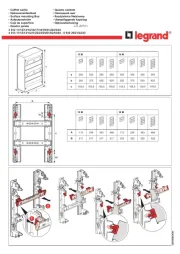
27 Maart 2025

27 Maart 2025
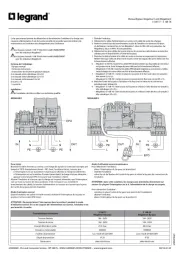
27 Maart 2025
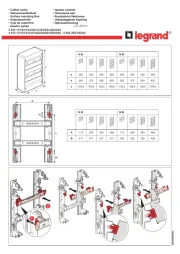
27 Maart 2025

1 Oktober 2024

1 Oktober 2024

1 Oktober 2024

27 Augustus 2024
Handleiding Niet gecategoriseerd
- Tele Vue
- Tiger
- Wibrain
- Hudora
- Starburst
- Tornado
- Yamazen
- Studiologic
- Mebus
- Browin
- SMA
- KMP
- Hinkley Lighting
- Qian
- Microair
Nieuwste handleidingen voor Niet gecategoriseerd

15 September 2025

15 September 2025

15 September 2025

15 September 2025

15 September 2025

15 September 2025

15 September 2025
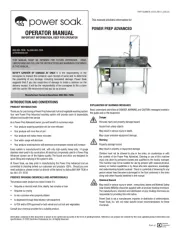
15 September 2025

15 September 2025
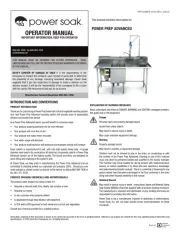
15 September 2025